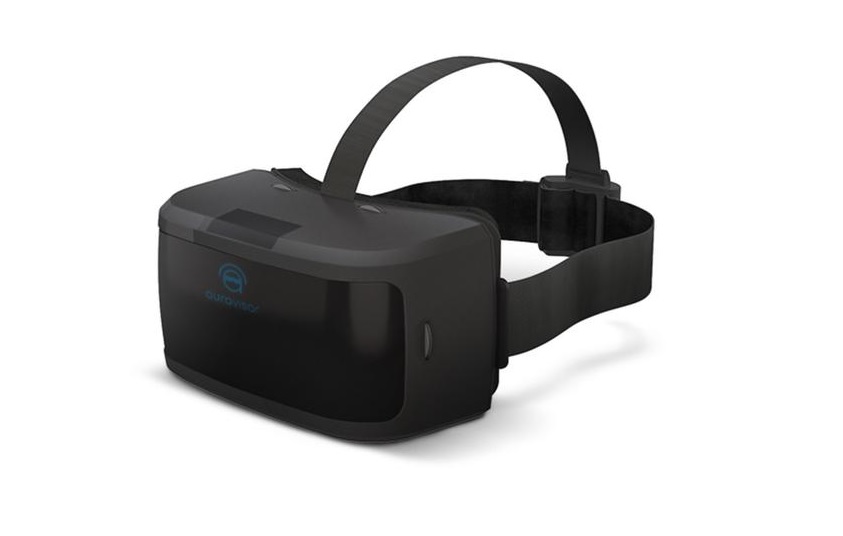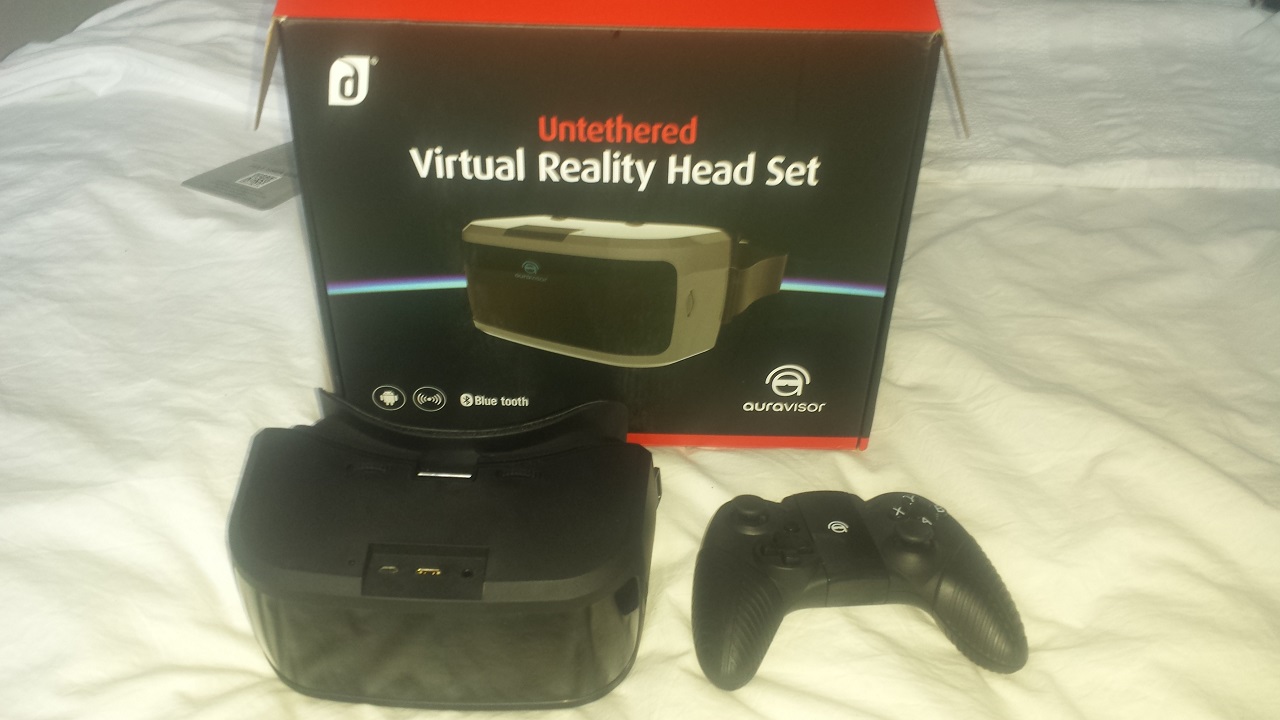We backed the Auravisor last year on Kickstarter as it appeared to offer some neat features above its peers such as the Gear VR, but since missing its original April 2016 release window VR has moved forwards whereas Auravisor seems stuck in a misaligned past. After some hands-on time with the finished version which has released ahead of getting its software up to spec, the initial impression isn’t positive at all and in fact points to a device which we’d wager might turn off any would be VR naysayers giving it a try. Take a look at our full Auravisor review to see if it’s worth buying.
On paper the Auravisor sounds excellent. A wire-free Android based VR headset with 1080p LCD screens, 100 degree field of view, long battery life and on board memory that doesn’t require a smartphone or computer to run. You just switch on, pop it on your head and be amazed at a world of virtual possibilities. The reality is much less glowing though and once the device is unboxed and put on the first cracks begin to appear.
Comfort:
First thing noticeable about the Auravisor is its weight despite some solid looking build quality. The spec sheet says it’s 490 grammes which makes it heavier than its competitors. It’s heavy on the head but bearable except the leathery face padding isn’t the best material to use and gets moist and uncomfortable quite quickly. The general fit is obviously subjective but where the Gear VR, Oculus Rift and HTC Vive fits us perfectly, the Auravisor does not and feels awkward, even to the point of having a plastic nose section digging into the bridge of the nose making it practically unbearable to use for more than 10 minutes at a time. A bit of user modification adding more padding might actually resolve this issue but out of the box it’s a complete misadventure.
Visual Quality:
Whilst the Auravisor visual quality is partially determined by the software, the LCD screen offers bright but completely washed out colours. You can adjust the brightness if desired but this can’t make up for the general low quality visuals. The lenses aren’t very good, making it extremely difficult to find a sweet spot. There are four dials to tweak the lens spacing and distance but it’s fiddly to find a comfortable setting because in one instance it will appear in focus, and then the next completely blurry. With no built in calibration tools the user has to constantly move the dials to get the most comfortable viewing which after a while causes strain on the eyes.
There is noticeable screen door effect although it’s not massively impacting but it’s the lacking software that highlights the Auravisor’s low quality. There’s a reason the 1440p Oled screens are used with the Samsung Note 4 phone, S6 and S7 because it needs the higher resolution. Cheap 1080p LCD screens just don’t present VR in the best way when you have a screen magnified inches from your eyes. There’s also a serious amount of motion blur and judder when moving ones head to look around which means the on-board computer is struggling to keep up with the graphical overhead. This is quite unfortunate, especially as it occurs in less demanding apps such as the movie viewer and even the apps menu itself.
Software/UI:
There’s massive issue with the user interface and calibration out of the box with no instructions or tools to help set it up. It needs to be connected to a wireless Internet connection which is quick and easy to perform but being reliant on Google Play services for apps and games means you’re tasked with logging into your account or setting one up. Sadly this is a task in itself as the menu screens and keyboard are zoomed in making it difficult to see certain keys. Something that should take seconds becomes minutes and even inducing the user to potentially just give up due to how fiddly the interface is. To be fair, a software update should resolve this issue but it’s still not great for first impressions. There should have been some pre-loaded content to circumvent having to login to Google services.
Sadly, the negatives don’t end there either as there’s issues with orientation as well where your viewpoint rotates on its own over time which is probably some calibration problem with the built in sensors. This used to happen on the Gear VR when in the Oculus Cinema and was fixed with an update so it’s hopeful this can be fixed as well.
The virtual environments like the video viewer are pretty low quality and what’s equally annoying is having entire screens move with your gaze rather than allowing you to freely look around. The cinema screen is also too close which means you can’t view the entire screen and with no head tracking to look around you’re stuck with an off centre view of most of the screen with the edge cut off. It’s very basic stuff here that’s not flattering for the device or VR in general.
Games are also low quality affairs with a reliance on free content for Google Cardboard and cheap games from the Play store that show off VR in a more negative way than anything. With the UI issues making it virtually impossible to download and play content of any merit, it’s a hard task to find content that shows off VR. In some ways, some of the software feels like it’s a wrap around 3D game rather than actual VR and with no quality control here means there’s potential to leave uninspiring impressions if used to show off VR to the uninformed. Whilst all bases are well covered with the general navigation interface it’s all very basic and just feel like it’s been put together with no attention to detail or practical care.
Conclusion:
The Auravisor is a slight upgrade from Google Cardboard but is in no way worth the £329 asking price given the quality of what’s on offer here. For a similar price point you’re most likely able to buy a pre-owned Samsung Galaxy S6 phone and Gear VR headset for a far greater, more polished and complete VR experience. Sadly, the Auravisor has not had the investment Oculus or HTC have injected into their respective products and it shows as a lack of quality control, testing and rushing to market after delays and without thought given to the software has left a product that’s a very low standard in comparison. Whilst the ideas behind the AuraVisor are commendable such as being able to plug in games consoles via HDMI In or convert 2D movies into 3D, the reality is these ideas are quashed based on the overall poor execution. In some ways this result doesn’t even feel like proper VR when comparing to better products. Simply put, this is a failure, with no redeeming qualities, aimed at people who might not know any better. As a first introduction to VR this is most likely to turn people off rather than inspire them to want to learn more. The Auravisor needs to be avoided at all costs until it has resolved its software problems – although these alone won’t fix the issues of quality. If you are interested in what VR has to offer and can’t afford the more expensive Oculus Rift or HTC Vive then a Gear VR or even Playstation VR is a much better starting point.
Overall Score 2/10






